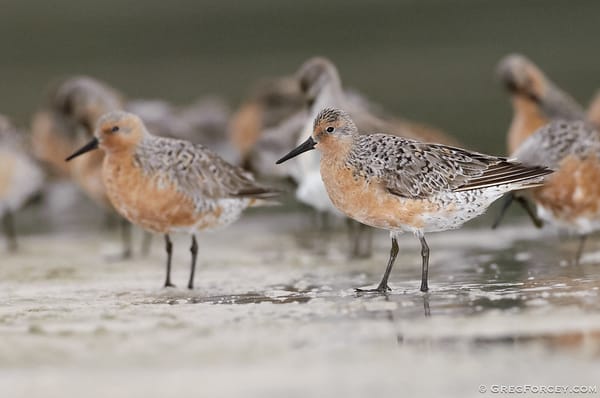Post-construction Offshore Wind Bird and Bat Research Using Acoustic and Thermographic Offshore Monitoring (ATOM)
Offshore wind bird and bat post-construction monitoring with Acoustic and Thermographic Offshore Monitoring (ATOM)
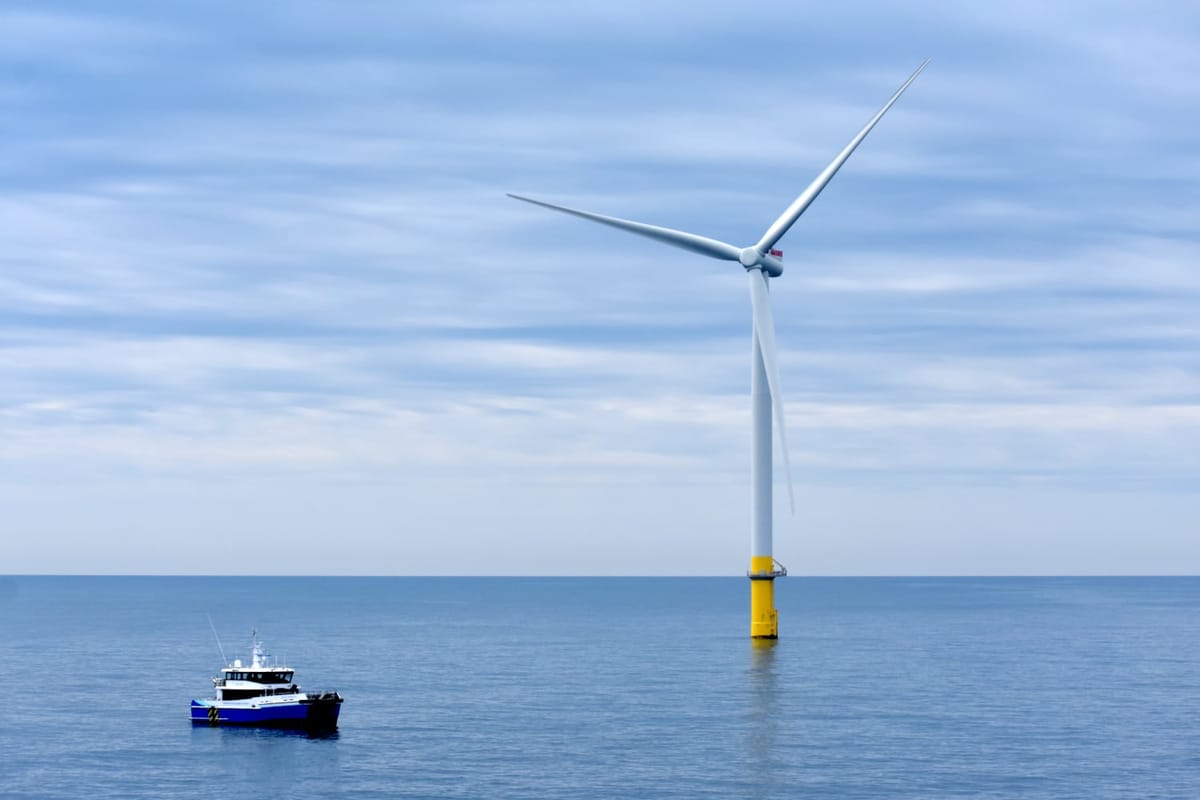
Much attention has been paid to bird and bat mortality from wind turbines onshore. Carcasses are easily visible underneath onshore turbines, allowing researchers to estimate mortality while considering detection and scavenger biases. However, searching for carcasses under offshore turbines is not feasible because of difficult access and few places where carcasses can land and be found. New remote sensing technologies address these issues by providing a way to survey wildlife activity at offshore turbines continuously. Our team collected bird and bat data at a Virginia offshore wind facility from spring 2021 to winter 2022 to characterize bird and bat species composition, understand temporal activity patterns, and quantify behaviors in the rotor-swept zone. Data from the first year revealed 521 bat detections, 1,011 bird detections, 49 bird or bat detections, and over 7,000 insect detections. Most (99%) of all observations occurred during the fall; minimal activity occurred during the spring and winter. Birds were active at lower median wind species compared to bats and insects. Bird activity declined above 5 m/s wind speed and was minimal above 8 m/s, while bat activity declined above 6 m/s and was minimal above 10 m/s. We observed 70 occurrences of microavoidance from 18 species or species groups, suggesting this fatality-avoiding behavior is widespread across species. We observed no collisions with turbine blades. The absence of collisions, microavoidance behavior, and reduced activity during moderate–high wind speeds suggests bird and bat collisions with offshore wind turbines are rare; however, more data are needed to confirm this conclusion.
Background
The United States expects to install 30 gigawatts of offshore wind capacity by 2030, with the potential to install 110 gigawatts by 2050. Consequently, there are concerns about bird and bat collisions and displacement that could occur as they come in contact with offshore turbines. Songbirds and shorebirds are especially of interest because they migrate at night, and little is known about their migration and use of the offshore environment. Bats also occur offshore, but little is known about their activity in this area. Wind farms may affect birds and bats through collisions or displacement/attraction, which can affect the fitness of individuals or populations. While bird collisions with offshore turbines seem to be rare, few studies exist due to the inaccessibility of offshore wind turbines. This project aimed to characterize bird and bat behavior within the rotor-swept zone (area occupied by the turbine blades) of offshore wind turbines to assess the potential risks of turbines to individuals and populations of birds and bats.
Study Area
The study area is a 2-turbine, 12-megawatt demonstration project located approximately 27 miles (ca. 43 kilometers) off the coast of Virginia. This project serves as a research project to support the larger commercial project expected to be constructed east of the Project.

Justification
As part of the Research Activities Plan, the project developer Dominion Energy, was required to collect post-construction monitoring for birds and bats during the spring, fall, and winter periods of the first year of operation:
- Spring: April 1–June 15
- Fall: August 15–October 31
- Winter: January 15–March 15
The ATOM Technology
To evaluate offshore bird and bat activity around turbines, our team deployed two Acoustic and Thermographic Offshore Monitoring (ATOM) systems on the turbines at the CVOW Pilot Project. This technology operates 24 hours/day, 7 days/week, and records activity regardless of visibility, weather, or time. Each ATOM system includes four different sensor types:
- Two thermal cameras operating in stereo (permits flight height and flight speed calculations)
- One visible-light camera permits species identification during the day
- Two bird and two bat acoustic detectors (multiple detectors for redundancy)
- One VHF receiver and antennas recording Motus-tagged animals

These sensors are connected to a custom computer, and data are recorded on solid-state storage. Video and acoustic sensors are oriented toward the rotor-swept zone, while the Motus antennas are oriented toward the sea to detect tagged animals flying nearby. A satellite modem provides remote access to ATOM to monitor system health and apply software fixes; the satellite modem bandwidth was too limited for video and acoustic data transfer.
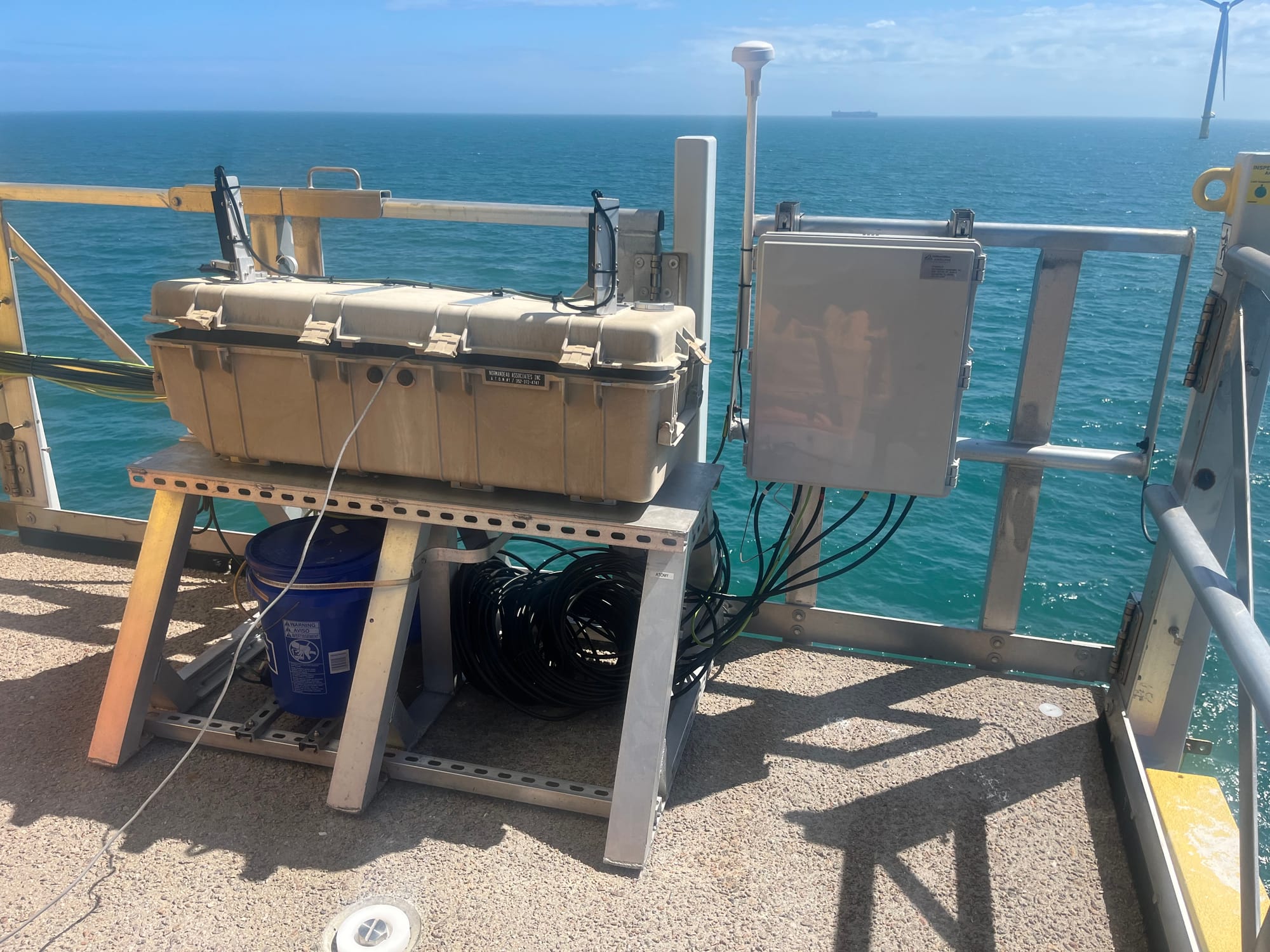
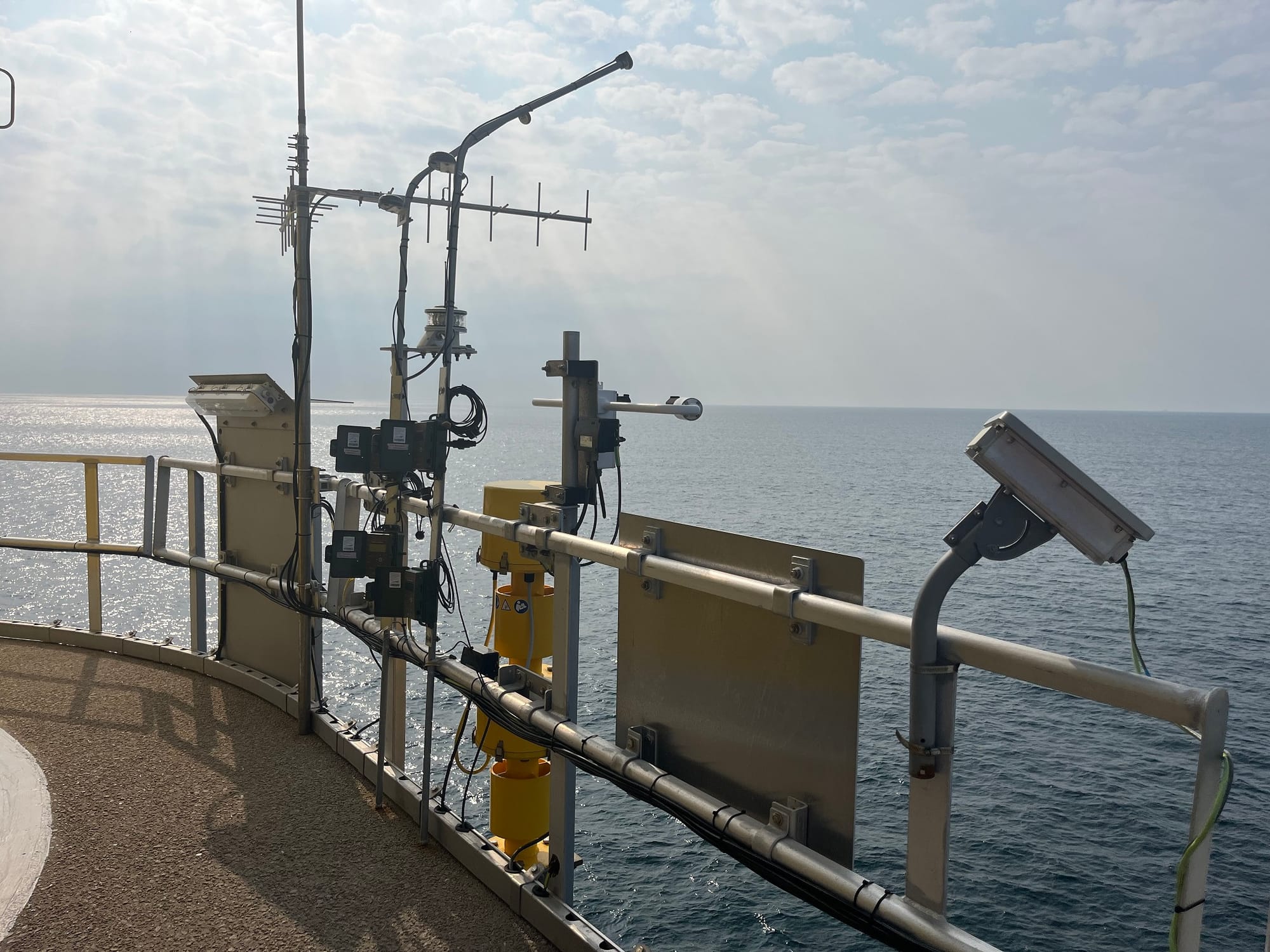
ATOM equipment deployed on an offshore wind turbine platform / Normandeau Associates, Inc.
Our team reviewed 100% of the video using an automated tracking algorithm and manual review. Extracted targets are classified as bird, bat, insect, or other and placed in a review queue assigned to biologists to review. Experts made all species identifications manually to the lowest taxonomic resolution possible. We noted whether the turbine blades were spinning for each bird/bat observation and noted the following behaviors for each bird/bat:
- Attraction: flies toward the turbine to inspect, then changes direction
- Hawking: takes short flights from a perch to capture insects, then returns to the perch
- Aerial foraging: continuous flight while capturing prey
- Monopole gleaning: captures insects off the turbine monopole
- Microavoidance: interacts but successfully avoids the turbine blade while it is spinning
- Low patrol: direct flight below the rotor swept zone
- High patrol: direct flight within or above the rotor-swept zone
- Flyover: very high flight over the turbine (mostly large birds that were detectable at greater distances)
- Thermaling: flying without wing movement
- Perching: sitting on substrate without flight
We also counted insects during the monitoring period and identified bird and bat calls to the lowest taxonomic resolution possible. We identified birds detected by the VHF receivers by uploading the tag data to Motus.
Results
During our study’s first year, our team found 521 bat detections, 1,011 bird detections, 49 bird or bat detections, and over 7,000 insect detections. Most (99%) of all observations occurred during the fall; little activity occurred during the spring and winter.
Our team found 31 species of birds and three species of bats across all the sensor types. For birds, there were five shorebird species, three gull species, one tern species, three raptor species, one woodpecker species, and 18 passerine species. Skuas, corvids, and swallows were also identified, but no individuals could be identified to species.
Only two bat detections occurred in the spring, and the remaining 519 detections occurred in the fall; no bats were detected in the winter. Bat detections include three bat species: silver-haired bat (Lasionycteris noctivagans), hoary bat (Lasiurus cinereus), and eastern red bat (Lasiurus borealis).
Insects included over 7,000 detections across all seasons, including many butterflies (Lepidoptera) and dragonflies (Odonata). Insect activity peaked during September and October and was much lower during other periods. Within-day activity showed that insect activity peaked during the early morning hours (6:00–8:00) and then again in the late afternoon (16:00–18:00).

There was a moderate correlation between bat and insect activity (ρ = 0.62) and passerine and insect activity (ρ = 0.48). This correlation is not surprising given the high number of aerial foraging behaviors directed at insects observed in the video.
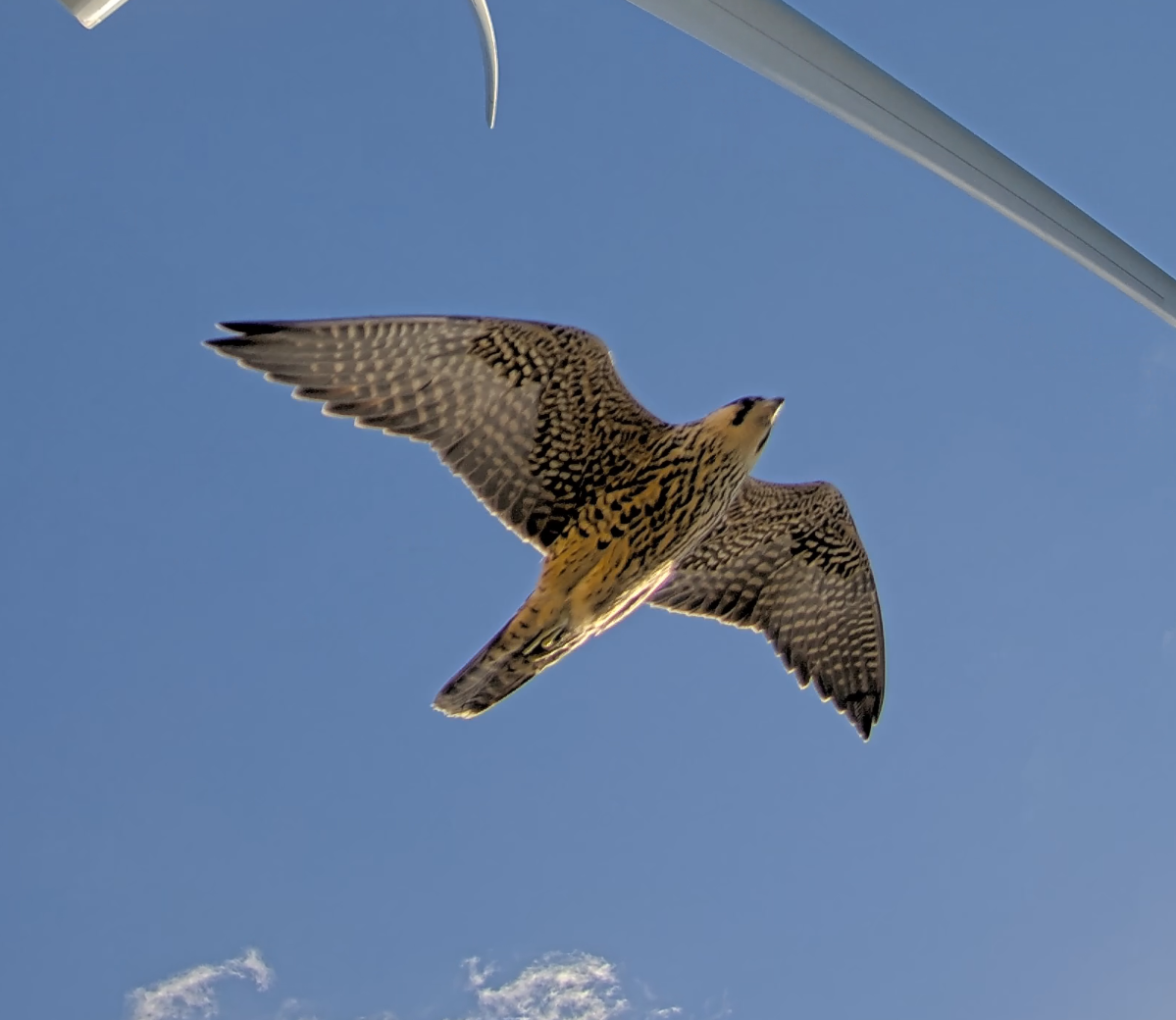
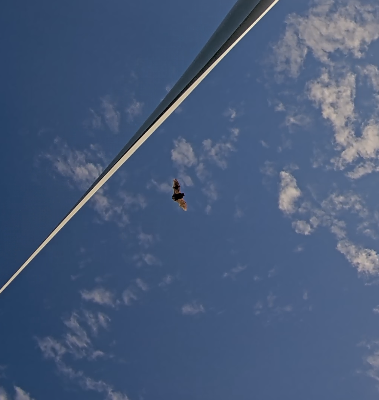
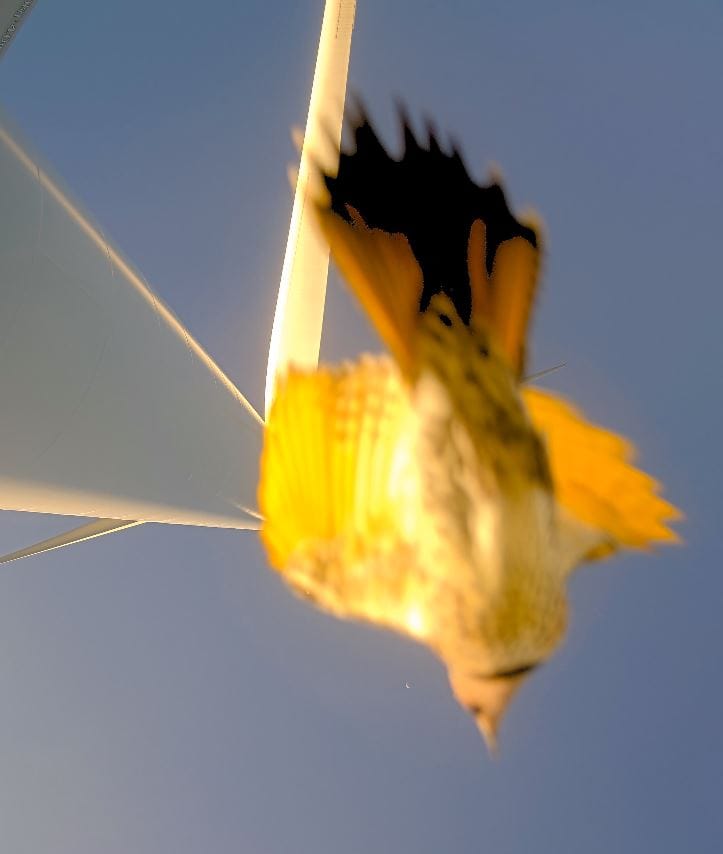
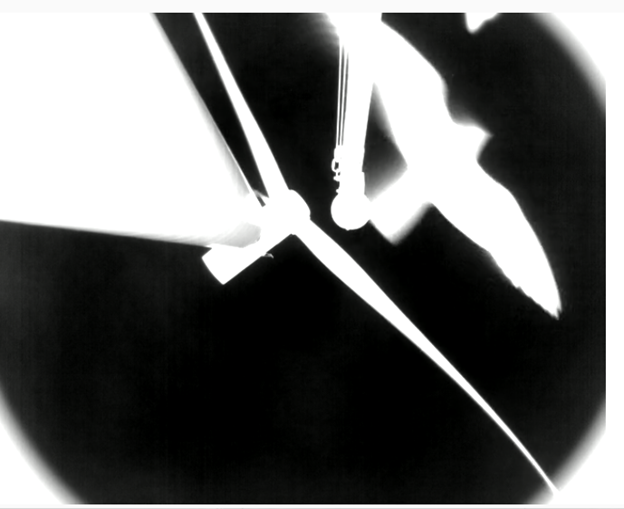

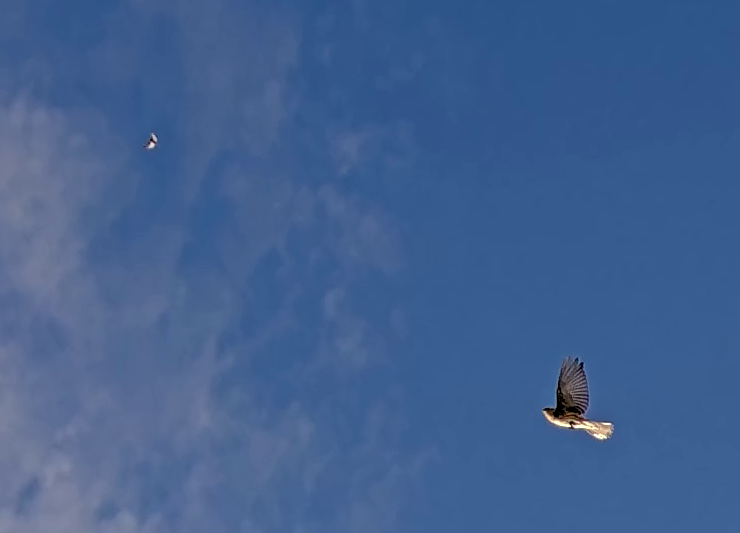
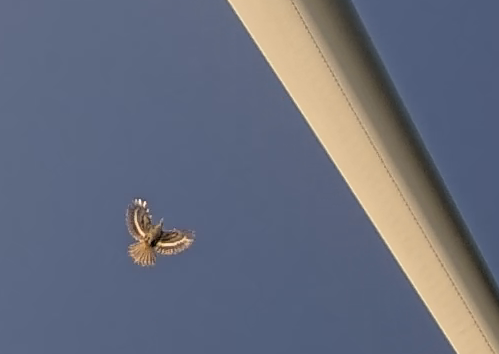
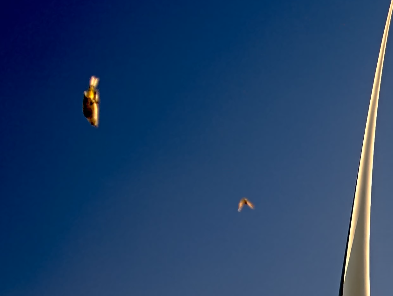
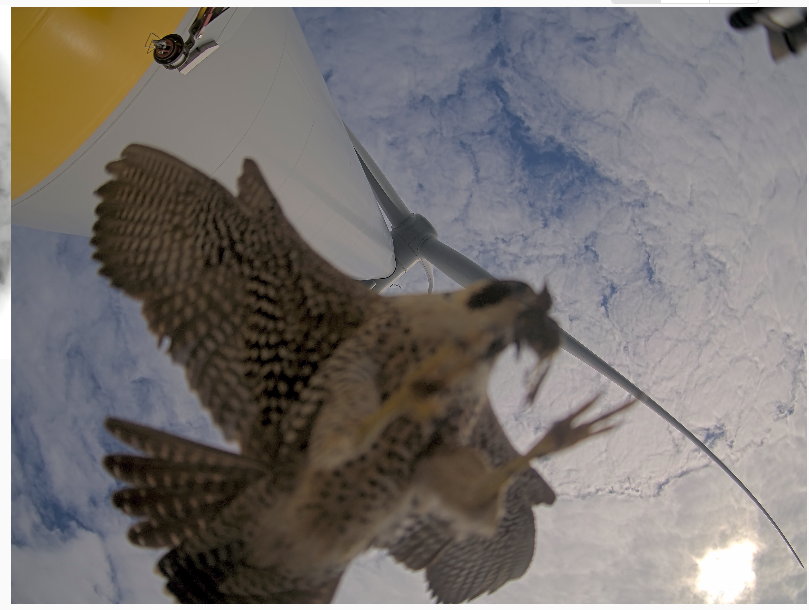
Selected birds and bats observed in the thermal and visible-light cameras from ATOM / Normandeau Associates, Inc.
Ninety-one percent of bird detections and 45% of bat detections were during the day.

Birds were active at lower median wind species compared to bats and insects. Bird activity declined above 5 m/s wind speed and was minimal above 8 m/s, while bat activity dropped sharply above 6 m/s and minimal above 10 m/s.


Foraging was the most common behavior (n = 596 detections) observed in 21 bird species/groups and two bat species groups. Aerial foraging was the most frequently observed foraging type (n = 463), followed by hawking (n = 104), and monopole gleaning (n = 29). Peregrine falcons were seen patrolling the turbines for prey frequently during the fall.
For birds recorded in the video, only 27% were observed when the blades were spinning. In contrast, 55% of bats recorded in the video were observed when the blades were spinning; however, aerial foraging occurred more often when the blades were not spinning.

In contrast to birds, approximately 56% of bat activity occurred when blades were spinning.

We observed 70 microavoidance behaviors from 18 species or species groups. Microavoidance is when a bird responds to the presence of a single blade and implements a ‘last-second’ action to avoid a collision. Microavoidance occurs through a change in direction, an adjustment in speed, or flight straight through the rotor-swept area.
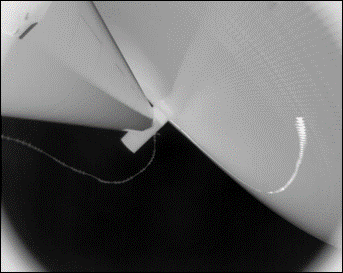
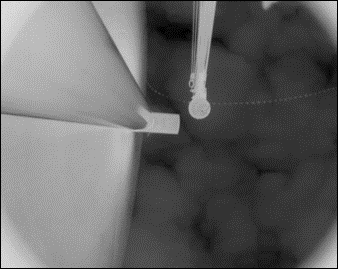
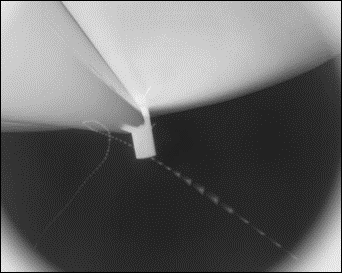
Selected microavoidance observations recorded with thermal video / Normandeau Associates, Inc.
We observed no collisions during the first year of study; however we did observe one bird and bat instance of air displacement, where air currents generated by turbine blades disrupt flight.
What does it all mean?
The ATOM system provided new insights into bird and bat behavior around turbines, showing not only occurrence but also foraging and avoidance behaviors across multiple species at offshore wind turbines. The occurrence of two woodland bird species, Northern Flicker and Brown Creeper, in the offshore environment was notable and unexpected.
The number of insects observed was unexpected and is a potentially important food source for migrant birds and bats. The presence of insects is assumed to be at least partially responsible for bird and bat activity around turbines, but we aren’t aware of any studies documenting this phenomenon, and little is known about the timing of offshore insect migration. Offshore insect surveys show that larger insects like those observed in this study compose a small fraction of <5% of aerial insects; smaller species of Diptera, Hymenoptera, and Homoptera are typically dominant. Thus, insect abundance was likely much higher than recorded with our monitoring, and further study of insect population dynamics offshore is crucial to understand how this food resource could impact birds and bats.
The decline of bird and bat activity with increasing wind speed is notable because the cut-in speed for the turbines at the Project is between 3 and 5 m/s, which suggests that much of the bat and bird activity occurs when the blades are not spinning. Only 27% of birds and 55% of bats were observed while blades were spinning. Birds and bats active while the blades are not spinning are not at risk of blade collision.
We observed 113 bird/bat observations within ~10 m of the spinning blades (microavoidance), and 70 observations were within ~1 m (nanoavoidance). Observations of microavoidance and no observed collisions during the first year of study suggest collisions are rare, though more data are needed to provide more support for this conclusion.
Finally, offshore turbines provide potential sites for perching and foraging for birds and bats that did not previously exist. This resource allows migrating birds and bats to feed, which may improve fitness but could also delay arrival at breeding or wintering grounds, decreasing fitness. The net effect of offshore turbines on population fitness is unknown and needs further study.
Next Steps
This study will continue continuously for another two years, and all ATOM sensors will run during this time. In the future, we will compare activity patterns and species among years.
ATOM will also gain new features in time, including:
- 360-degree detection around the monopole
- Acoustic detectors installed at multiple heights on the monopole
- Improved detection at the top of the rotor-swept zone from nacelle-mounted equipment
References
Bowden J., and C. G. Johnson. 1976. Migrating and Other Terrestrial Insects at Sea. Pages 97–117 in Marine Insects (Amsterdam-Oxford: North -Holland Publishing Company; New York: American Elsevier Publishing Company), L. Cheng, editor.
Normandeau Associates, Inc. 2022. Post-construction bird and bat monitoring at the Coastal Virginia Offshore Wind Pilot Project. First annual report, Dominion Energy, Gainesville, Florida.
Willmott, J. R., G. Forcey, and M. Vukovich. 2023. New insights into the influence of turbines on the behaviour of migrant birds: implications for predicting impacts of offshore wind developments on wildlife. Journal of Physics: Conference Series 2507:012006. https://dx.doi.org/10.1088/1742-6596/2507/1/012006
Vanermen, N., T. Onkelinx, W. Courtens, M. V. de walle, H. Verstraete, and E. W. M. Stienen. 2014. Seabird avoidance and attraction at an offshore wind farm in the Belgian part of the North Sea. Hydrobiologia 756:51–61.




